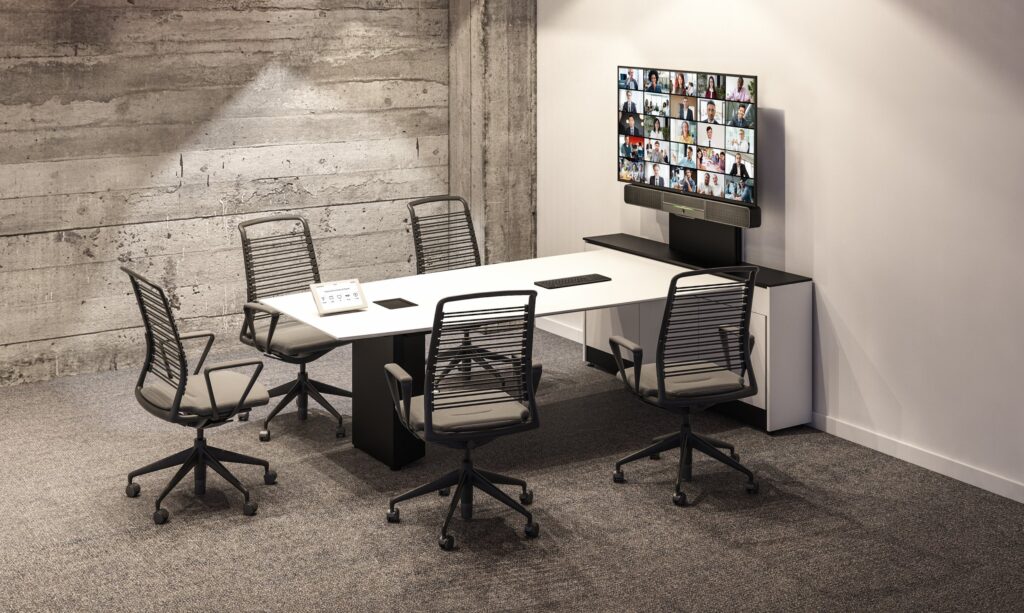In the evolving landscape of modern workspaces, businesses are constantly seeking ways to improve collaboration, productivity, and communication. Enter the huddle room, a small yet powerful space designed to facilitate quick, efficient meetings. These rooms have gained significant popularity as companies shift towards more flexible and agile work environments. In this blog, we’ll explore what a huddle room is, why it’s important, and the key benefits it offers to businesses.
1. What is a Huddle Room?
A huddle room is a small meeting space designed to accommodate between 2 to 6 people, providing a private, quiet environment for brainstorming sessions, impromptu meetings, or video conferencing. Unlike traditional large conference rooms, huddle rooms are equipped with essential technology—such as video conferencing tools, flat-screen displays, and collaboration software—allowing teams to communicate easily, whether in person or remotely.
These rooms are ideal for quick discussions or “huddles” that do not require the formal setting of larger conference rooms. Huddle rooms can be found in most modern offices, particularly in companies that prioritize flexibility, innovation, and collaboration.
2. Key Features of a Huddle Room
- Small, Intimate Space: Designed for 2-6 people.
- Integrated Technology: Equipped with video conferencing tools, high-quality audio systems, and screens for presentations.
- Collaborative Environment: Encourages team discussions, brainstorming, and problem-solving.
- Flexible Setup: Often includes furniture that can be easily reconfigured based on the team’s needs.
3. The Rise of Huddle Rooms in Modern Workspaces
With the growing trend toward open office designs, companies have sought ways to provide private spaces for focused collaboration. Large conference rooms can be intimidating or unnecessary for small group discussions, and scheduling these rooms for quick meetings can be inefficient. This has led to the rise of huddle rooms, which provide a more dynamic solution for small, spontaneous, and focused meetings.
Additionally, the increase in remote and hybrid work models means that companies need spaces where virtual meetings can take place seamlessly. Huddle rooms have become the go-to solution for small teams looking to meet quickly or connect with remote colleagues without interruptions.
4. Top Benefits of Huddle Rooms
Improved Collaboration
Huddle rooms are purpose-built for small groups to work together effectively. Their intimate size fosters deeper discussions and more engaged participation, leading to better decision-making and faster problem resolution. They also enhance virtual collaboration, offering seamless integration with video conferencing tools for remote participants.
Cost-Effectiveness
Compared to large, fully-equipped boardrooms, huddle rooms are more cost-efficient to set up and maintain. Companies can create several huddle rooms for the price of one large conference room, maximizing the number of meeting spaces without breaking the bank.
Flexibility for Teams
Huddle rooms offer flexibility, allowing employees to quickly schedule impromptu meetings without having to book in advance. This enables teams to meet on demand, solving problems in real time and adapting to the fast pace of business.
Encouragement of Spontaneous Meetings
One of the best features of huddle rooms is the ease with which teams can gather for spontaneous meetings. This encourages faster decision-making and real-time collaboration without the need to schedule formal meetings, increasing workplace agility.
Better Utilization of Office Space
Huddle rooms make excellent use of underutilized spaces in the office. Many offices have areas that aren’t large enough for traditional meeting rooms but can be transformed into effective huddle spaces. This increases overall office efficiency and ensures that teams have the resources they need to collaborate.
5. How Technology Enhances Huddle Rooms
The success of huddle rooms largely depends on the technology within them. Many modern huddle rooms are equipped with video conferencing tools like Poly Studio X30 or similar solutions, allowing remote team members to join discussions effortlessly. Additionally, wireless screen sharing, high-quality audio systems, and interactive whiteboards enhance the functionality of huddle rooms, making collaboration both smooth and efficient.
Key technologies in a huddle room include:
- Video Conferencing Solutions: Seamless communication with remote teams.
- Interactive Displays: Encouraging visual collaboration and brainstorming.
- Audio Systems: Ensuring clear communication even in small spaces.
- Wireless Connectivity: Allowing participants to share screens and content easily.
6. Best Practices for Designing a Huddle Room
To make the most of a huddle room, thoughtful design is essential. Here are some tips for creating the perfect huddle space:
- Maximize Comfort and Ergonomics: Choose comfortable seating and a layout that promotes interaction.
- Ensure Technology Integration: Equip the room with video conferencing tools, interactive displays, and easy-to-use connectivity options.
- Soundproof the Space: Ensure privacy by incorporating soundproofing measures to reduce noise from adjacent areas.
- Keep it Flexible: Use furniture that can be reconfigured based on the needs of the team, allowing for a more adaptable space.
7. Conclusion
Huddle rooms are a powerful asset in the modern office. They provide an intimate, tech-driven space for teams to collaborate efficiently, making them ideal for companies embracing flexibility, agility, and remote work. Whether you’re brainstorming a new project, holding a quick meeting, or connecting with remote colleagues, huddle rooms offer an affordable and effective solution to enhance productivity in any workspace.

